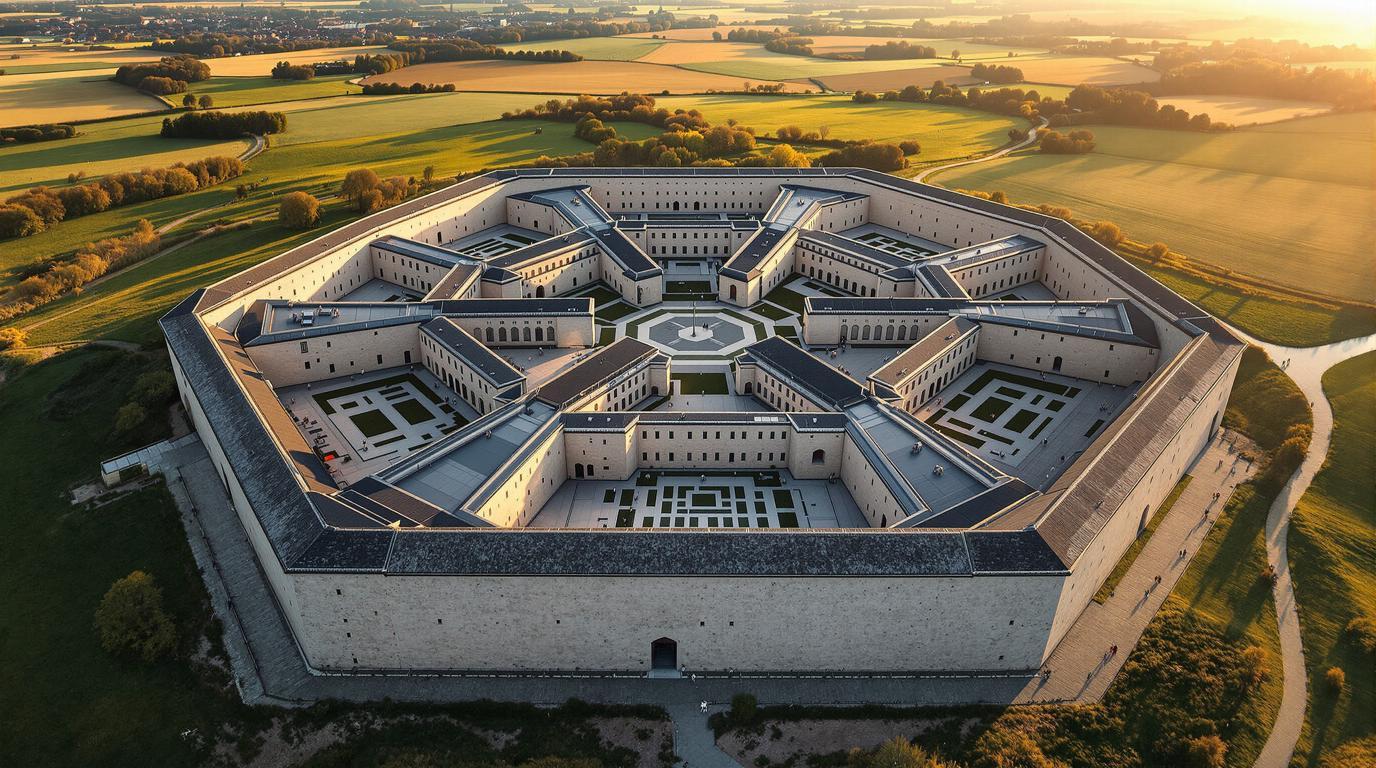France’s perfect octagon fortress that made UNESCO’s list is the architectural marvel almost no American has discovered. Sitting near the Rhine River in northeastern France, Neuf-Brisach stands as one of military history’s most remarkable achievements—a geometric marvel that revolutionized fortress design when Louis XIV commissioned it in 1699.
The Sun King’s perfect geometric fortress
Unlike the medieval castles dotting the European landscape, Neuf-Brisach represents military planning at its most precise. Designed by Sébastien Le Prestre de Vauban, Louis XIV’s military engineering genius, the town forms a perfect octagon with symmetrical streets radiating from a central square. This wasn’t just architectural showing off—it was revolutionary defensive strategy.
“Vauban created not just a fortress, but a mathematical solution to warfare,” explains local historian Marie Dubois. “Every angle, every distance was calculated to maximize defensive capabilities while creating a functional town.”
Walking through military genius
The most rewarding way to experience Neuf-Brisach is on foot, following the blue line that guides visitors through Vauban’s masterpiece. The massive stone ramparts, rising like geometric cliffs from the flat Alsatian plains, create a striking contrast against the sky. Unlike other medieval French towns with their winding streets, here every boulevard follows a precise grid.
A UNESCO treasure without crowds
Despite its UNESCO World Heritage status (as part of the “Fortifications of Vauban” group), Neuf-Brisach remains refreshingly uncrowded. While tourists flock to nearby Colmar and Strasbourg, this military marvel offers a peaceful atmosphere where you can often have entire sections of the massive ramparts to yourself.
“Americans who discover Neuf-Brisach are always amazed that such an impressive historical site isn’t overrun with tourists,” says Pierre Laurent, a local tour guide. “They can actually hear the echoes of history without fighting through crowds.”
Beyond the walls: unexpected art
The fortress holds a surprising secret within its formidable walls—contemporary art. The MAUSA (Museum of Urban Art and Street Art) has transformed sections of the historic fortifications into exhibition spaces where vibrant murals and installations create a striking dialogue between 17th-century military architecture and modern artistic expression.
Strategic location for cross-border exploration
Like hidden German towns just across the border, Neuf-Brisach’s location makes it perfect for broader European exploration. The town sits minutes from Germany and a short drive from Switzerland, allowing visitors to experience three distinct cultures in a single day.
Cycling through history
The flat terrain surrounding Neuf-Brisach makes it ideal for cycling enthusiasts. Bike paths connect the fortress to Colmar and beyond, offering a leisurely way to experience the Alsatian countryside. Unlike challenging Alaskan landscapes, these gentle routes welcome riders of all abilities.
Seasonal transformation
Winter transforms Neuf-Brisach into a Christmas wonderland when the central square hosts a traditional Alsatian market. The geometric precision of the town, dusted with snow and illuminated by thousands of lights, creates a magical setting that rivals more famous markets in the region.
“The Christmas market here feels authentic because it’s primarily for locals, not tourists,” notes Emma Schmidt, a resident artisan. “The fortress walls create a cozy atmosphere you won’t find in larger cities.”
Where to stay and eat
While accommodation options within Neuf-Brisach remain limited, nearby Colmar offers everything from luxury hotels to charming guesthouses. For a truly immersive experience, traditional Alsatian cuisine can be found in the town’s small restaurants, where specialties like tarte flambée and local wines showcase the region’s culinary heritage.
Unlike popular wellness destinations or celebrated architectural sites elsewhere in Europe, Neuf-Brisach offers something increasingly rare: an authentic encounter with European history without commercial distractions. Here, Louis XIV’s perfect geometric vision stands frozen in time, waiting for curious travelers to discover its mathematical beauty and strategic brilliance.
